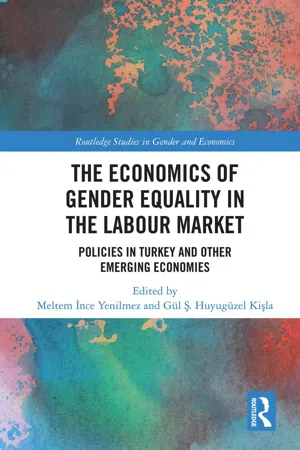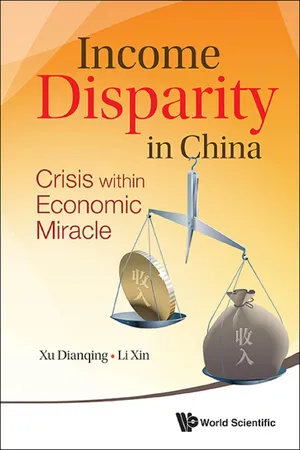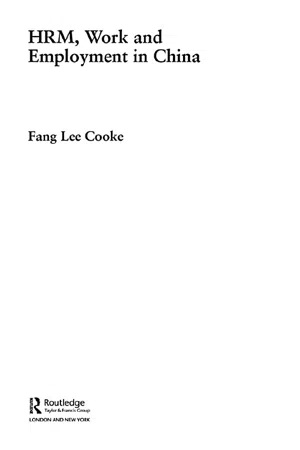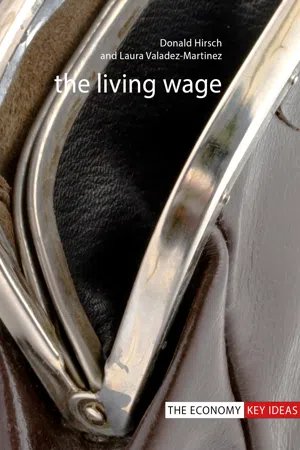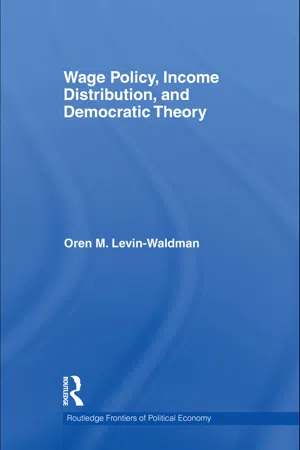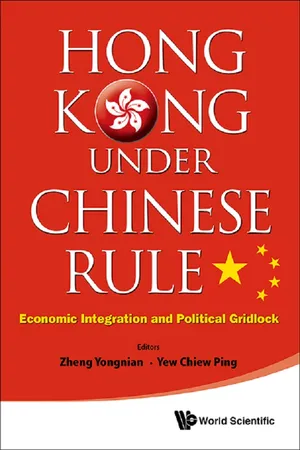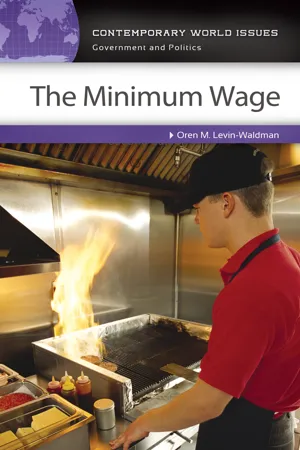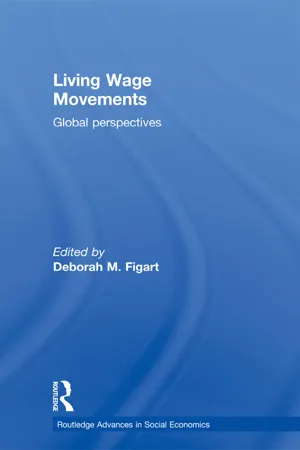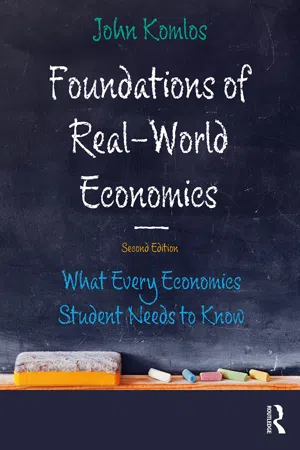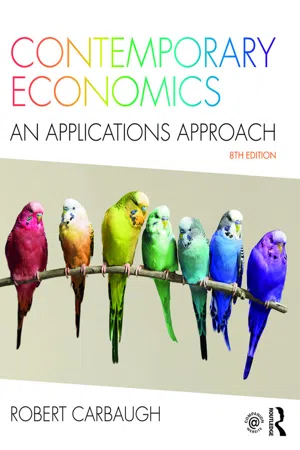Economics
Minimum Wage Laws
Minimum wage laws set the lowest hourly rate that employers can legally pay their employees. The aim is to ensure that workers receive a fair wage for their labor and to prevent exploitation. However, critics argue that minimum wage laws can lead to job losses and reduced employment opportunities, particularly for low-skilled workers.
Written by Perlego with AI-assistance
Related key terms
Related key terms
1 of 4
Related key terms
1 of 3
12 Key excerpts on "Minimum Wage Laws"
- eBook - ePub
The Economics of Gender Equality in the Labour Market
Policies in Turkey and other Emerging Economies
- Meltem İnce Yenilmez, Gül Ş. Huyugüzel Kişla(Authors)
- 2021(Publication Date)
- Routledge(Publisher)
On the other hand, as pointed out in Stigler (1946), in a monopsonistic market the firm will optimally set employment below competitive equilibrium levels in order to pay a lower wage than the competitive one. In such a consideration, a positive minimum wage impact is expected, because it takes the ability to determine salaries out of the firm’s control. Through eliminating the incentive to keep jobs ‘artificially’ low, the business will both pay the higher (mandated) wage and raise its level of employment – thus amounting to advantageous situation for the supply side of the market. The firm is worse off, of course, but it is still possible for it to earn positive profits depending the current level minimum wage.The smaller the proportion of the economy left uncovered by the minimum wage law, the larger will be the proportion of diminished employment produced by that law that will be moved into the state of unemployment. The individuals who will be most antagonistically influenced by a legitimate the lowest pay permitted by law will be low-wage labourers. Therefore, low-wage workers are most intensively and most immediately touched by such laws. Low-wage workers who will be forced into second-best employment or into unemployment by Minimum Wage Laws systematically include young people, minorities, the elderly, the handicapped, and those without skill (Rottenberg, 1981: 4).The labour force or currently active population includes all individuals who meet the prerequisites for involvement in the workforce (the armed forces plus civil jobs) or the unemployed. Employees are described as those who work for pay or benefits for at least one hour a week, or who are employed but are temporarily out of work due to illness, leave or industrial action (OECD Employment Outlook, 2019).A few decades ago, researches in the time series showed that a 10% increase in minimum wage would be correlated with a 1% to 3% drop in youth jobs (Brown, Gilroy, and Kohen, 1983). Because of the intrinsic challenges of drawing meanings from econometric studies, numerous ongoing examinations have used alternative methodologies to better determine the exact relationship between the both variables. Many studies assert that businesses, governments and sectors include varying ratios of workers whose wages are sensitive to any change in minimum wage policy (Currie and Fallick, 1996). Moreover, politicians generally advocate minimum wage policy in order to reduce poverty by raising income level of workers. Nevertheless, increases in some young workers’ salaries owing to a minimum wage creates a disadvantageous case for others. Minimum wages reduce youth employment prospects and generate joblessness. Employees are missing out on work training programs that would equipped with high skills and also would have led to higher salaries later. Young people who cannot find jobs need to be helped by their families or the social welfare system. Late participation in the labour market limits young unskilled workers ‘lifetime income levels’ (Kalenkoski, 2016). - eBook - ePub
Income Disparity In China: Crisis Within Economic Miracle
Crisis within Economic Miracle
- Dianqing Xu, Xin Li(Authors)
- 2014(Publication Date)
- WSPC(Publisher)
After a close scrutiny, things may not be as simple as they seem. The minimum wage is a double-edged sword that can hurt the interests of the poorest people. The minimum wage law is not so bad that it can be considered reactionary. Nevertheless, introduction of the law is untimely.10.2. Minimum Wage in Countries all over the World
The minimum wage system is a means for the government to intervene in the labor market. The system established a bottom line for wages through legal means to ensure that the income of workers can meet their and their families’ basic survival needs.The minimum wage legislation began in the late 19th century when New Zealand introduced the Industrial Adjustment and Arbitration Law, which aimed to solve the labor–management disputes and eliminated the sweat wage through the rule of the minimum wage.The International Labor Organization held the 11th International Labor Conference in 1928 and passed the No. 26 convention or the Convention Concerning the Creation of Minimum Wage-fixing Machinery. The Chinese government approved this convention in 1930 and formulated the first Minimum Wage Law in China, which proposed the lowest wage protection. The regulation was not implemented well because of the chaotic situation then.After World War II, almost all developed capitalist countries and most developing countries formulated their respective Minimum Wage Laws. The International Labor Organization formulated the Nos. 26, 29, and 131 conventions and Nos. 30, 89, and 135 proposals in the form of the international labor law in 1928, 1951, and 1970, respectively, with Nos. 131 and 135 proposals intended for developing countries (Table 10.3 ).In 1984, the Chinese government approved 14 international labor conventions by the former Guo Ming Dang government, including the Convention Concerning the Creation of Minimum Wage-fixing Machinery.4 The Labor Ministry issued the Minimum Wage Ordinance in 1993 and approved the Labor Law in 1994. The different places then established their minimum wages accordingly. After 2004, the central government required the local areas to adjust the minimum wage at least once every two years. “According to the Provisions on Minimum Wages issued by the Ministry of Labor and Social Security in 2004 and the Minimum Wage Regulations issued by the Ministry of Labor and Social Security in 2004, the minimum wage is the lowest compensation that employers may legally pay to workers on the premise that the workers provide the normal labor in the legal working time or within the working time specified in the labor contract concluded in accordance with the law. The minimum wage does not include overtime pay, allowance for middle and night shifts, working in high and low temperatures, underground, or in poisonous and harmful environments, the insurance and welfare provided by the national laws and regulations, or the non-monetary income paid by the enterprises through subsidizing food, housing, etc.”5 - eBook - ePub
- Fang Lee Cooke(Author)
- 2004(Publication Date)
- Routledge(Publisher)
According to the Labour Law, employing organizations must pay their workers a minimum wage set by their local governments, usually at municipal level. ‘Minimum wage’ refers to a wage which should be sufficient to cover basic living costs for the workers themselves as well as their family members, usually based on the minimum cost of living for the worker plus 50 per cent (for half of each family member). The Labour Law asserts that employers should not include subsidies such as canteen and travelling supplements, benefits in kind, nightshift premiums and overtime as part of the wage when calculating the minimum wage. The Labour Law also specifies that the level of minimum wage of each local area should be co-determined through negotiation between the local government, the trade unions and the representatives of the enterprises. When determining the level of the minimum wage, the parties should take into consideration the local standard of the minimum cost of living for the worker and the average number of family members whom the worker needs to support, the average wage in the area, the level of productivity, the employment rate and other economic conditions. Employers are also required to pay workers their minimum wage during their statutory rest and holiday periods.Local governments are given the power to increase the level of minimum wage to match the rising costs of living, usually on an annual basis and no more than once a year. For example, in 2001, Beijing local authorities increased the minimum hourly rate from 2.4 yuan to 2.6 yuan, and the minimum monthly wage from 412 yuan to 435 yuan. Guangdong Province carried out similar adjustments in 2001, which saw a minimum of a 7 per cent increase of its minimum wage. As a result, the content and coverage of the minimum wage regulations vary from area to area in the country.Enforcement mechanisms
As is the case with the design of the minimum wage policies, the ultimate responsibility for enforcing them lies with the local governments. Local labour authorities of all levels (from township to province) are responsible for the monitoring and inspection of the implementation of minimum wage policies by local enterprises. They are also responsible for dealing with specific problems which emerge in the implementation and for modifying the policies based on the local situation. In addition, trade unions of all levels are given the power to monitor the implementation of minimum wage policies within the legal framework. In theory, minimum wage regulations provide a legal weapon for trade union officials in their role of protecting workers’ interests. - eBook - ePub
- Donald Hirsch, Laura Valadez-Martinez(Authors)
- 2017(Publication Date)
- Agenda Publishing(Publisher)
This dynamic may now change. In announcing a large, politically determined increase in the minimum wage for over-25s between 2016 and 2020, and asking the Low Pay Commission to advise on progress towards this level but not on the level itself, the UK government has dropped its former caution. This will be testing the sensitivity of employment to a minimum set at levels not previously tried. The government has predicted a near-negligible effect on jobs – a 38 per cent increase over five years causing a reduction of only 60,000, or about 0.2 per cent of the total number of jobs. However, this is based on a theoretical model of labour demand which cannot be checked directly against reality, since the conditions that it measures have not previously existed. As described in Chapter 2, a number of US cities and states are also breaking new ground in terms of the rate at which the minimum wage is being lifted, by phasing in a rate of $15 an hour, over twice the present (2016) federal minimum. All of these cases have been inspired by living wage campaigns, and thus given comparatively greater weight to moral than to economic arguments. The research showing that fears of economic harm have so far not been realized clearly encourages legislators to be bolder in pursuing wages considered to be adequate in covering living costs. Whether this boldness is merited will be tested by future research on economic impacts.The possibility of substitution of jobs, especially across age groups, must be taken seriouslyIt is important to distinguish between the effect of minimum wages on overall employment rates and the employment chances of individual groups. In particular, if groups with low wages also have low productivity, efforts to help them by setting a minimum wage will be counterproductive if the result is that firms hire a different set of workers better equipped to produce more. If firms seek to raise production by employing workers with higher skill levels, substitution of less-skilled with better-skilled workers is one possibility, although another, more benign outcome is for employers to train existing workers to become more productive. On the other hand, insofar as productivity is linked to age and experience rather than skills that can be readily acquired through training, displacement of younger, less experienced workers may be the only option.Many of the studies already referred to focus on employment outcomes for younger workers, since they tend to be the worst paid and the earliest affected by a statutory minimum – especially in the United States where minimum wages do not tend to discriminate by age. The relatively low level of US minimum wages, even in relation to teenagers’ productivity, helps explain why their employment rates have not been clearly affected. Previous studies showing some effect on teenage employment in the 1970s (when the US minimum was considerably higher) did not identify any compensating effect on adult employment. But in Europe, where adult minimum wages tend to be much higher relative to average pay, the placing of age boundaries and how much below the adult rate the youth rate is set can be key issues (see Box 3.3). - Oren M Levin-Waldman(Author)
- 2010(Publication Date)
- Routledge(Publisher)
Data from the Integrated Public Micro-use Data Series (IPUMS) for 1940–2000 shows that the effects of a minimum wage increase would generally be greater than commonly supposed because the population earning around the minimum wage was actually substantially larger than usually supposed (Levin-Waldman 2002; 2005a). Therefore, the effective minimum wage population would have to be defined as those earning around the minimum wage, i.e. wage contours. Wage institutions like unions and Minimum Wage Laws did make a difference, particularly in explaining wage differentials between different regions of the country. This would also imply that wage institutions like unions and the minimum wage also serve as key rates of change in particular wage contours, and that the focus on only those earning the statutory minimum is simply too narrow to make a determination regarding the utility of the minimum wage as a policy tool for both assisting low-wage workers and potentially narrowing the wage gap between the bottom and the top.William Spriggs and Bruce Klein (1994) also suggest that the minimum wage’s greatest import is its function as a reference point for wages around it. They found that despite changes in the statutory minimum wage, firms merely maintained their internal wage structures. Increases may have resulted in employment consequences in some cases, but the effects were not found to be significant. Rather firms simply viewed the minimum wage as a reference point for what starting wages should be. Building on this construct, David Gordon (1996) later argued that a decline in the real value of the minimum wage also affected those earning in between the point where the statutory minimum wage used to be and the point where it is at the end of the dip. An increase in the minimum wage, then, might lead to an upward pressure on wages because employers would feel compelled to pay higher wages even to those not directly affected (pp. 214–215). The real importance of the minimum wage lies in its impact on wages from the statutory minimum to some point above. Moreover, one could not even begin to measure more accurately the size of the minimum wage population unless the minimum wage was looked at in real terms rather than statutory terms. This, of course, would imply that as the statutory minimum wage increases, so too does the starting wage, thereby shifting upward the general wage structure. Using a wage contour construct similar to Spriggs and Klein (1994), Deborah Figart and June Lapidus (1995) estimated that an increase in the minimum wage from $4.35 in the mid-1990s to $4.75 would result in an increase of women’s average wages from $9.79 to $10.00, although the effects for those earning less than the previous average would be larger.- eBook - ePub
Hong Kong Under Chinese Rule: Economic Integration And Political Gridlock
Economic Integration and Political Gridlock
- Yongnian Zheng, Chiew Ping Yew(Authors)
- 2013(Publication Date)
- WSPC(Publisher)
2The legislation of a minimum wage is complicated and controversial because of its scope and the parties involved. First, it straddles two policy domains: it is a social welfare policy in purpose but a labour market regulation in design and operation. Proponents are social reformers who also espouse other measures — public assistance and public services such as education, social insurance and healthcare — to ameliorate poverty, while opponents are advocates of the free market and business interests.3 As a policy to combat poverty, the importance of a wage floor to social reformers and where it ranks on their social welfare agenda alongside other measures are critical in its inception. As a labour market policy, the minimum wage embroils employers, unions and free market advocates in a political struggle over its structural components — its level, coverage and enforcement, and whether it is universal or targets specific sectors.4Contradictory findings on the impact of a wage floor on employment and unemployment further beset the path to a SMW. The primary goal of a SMW is to raise the income of the lowest paid on the wage scale and lift the poor out of penury.5 Yet some critics see the policy as running contrary to its purpose, hurting the poor and low-skilled workers whom it purports to help.In the early days, economists proposed that a minimum wage would cost jobs, especially in a competitive labour market. From the 1980s, economists have begun to present countervailing empirical evidence showing that the minimum wage has no obvious effect on the level of employment, and that it may even contribute to higher employment.6The experience of different societies also varies. In Australia it was found that a hike in minimum wage might worsen unemployment and too high a rise might even affect employment; in Japan, an increase in minimum wage rate had negative impact on women’s employment; and in the United States, a rise in minimum wage failed to alleviate poverty. In contrast, Taiwan, - eBook - ePub
Minimum Wages in China
Evolution, Legislation, and Effects
- Shi Li, Carl Lin, Shi Li, Carl Lin(Authors)
- 2020(Publication Date)
- Palgrave Macmillan(Publisher)
This regulation stipulates that a minimum wage can only be modified after it has been effective for at least one year. This regulation requires that local governments set the minimum wage according to local average wage, productivity, unemployment rate, economic development, and minimum living expenses, and all enterprises should comply with this regulation. These conditions provide considerable flexibility for provinces and cities in setting their minimum wages, with the economic development principle giving them the flexibility to restrain minimum wages to attract foreign investment (Wang and Gunderson 2011). The minimum wage regulation was formally established in 1995 when the Labor Law of the People’s Republic of China was set into force. As a result, most provinces in China announced their first monthly minimum wages around 1995. At the end of 2004, temporary labor shortages in some developed areas caught the attention of policymakers. In the same year, a modified minimum wage regulation, the Minimum Wage Regulation, was adopted. According to this new regulation, the minimum wage should be adjusted at least once every two years. This is a significant improvement over the 1993 regulation. Employers should not include subsidies, such as overtime pay, as part of the wage, when calculating the minimum wage. Penalties for violation of the regulation were increased from 20–100% of the owed wage to 100–500%. A minimum wage per hour that applies to part-time workers was also stipulated in this updated regulation. The minimum wage regulation was also part of the Labor Contract Law which took effect on May 1, 2008. However, at the end of 2008, the Department of Human Resources and Social Security of China advised local governments against increasing the minimum wage in 2009 in case of possible negative impacts of the international financial crisis. As the influence of the financial crisis waned, there was a new round of minimum wage increases from 2010 - eBook - ePub
- A. Mitchell Polinsky, Steven Shavell(Authors)
- 2007(Publication Date)
- North Holland(Publisher)
3 above, with ambiguous welfare consequences.9 Minimum wage rules
Among the most extensively discussed rules within the economic analysis of employment law are minimum wage rules. Under these rules, employers must pay a legally-specified minimum wage to employees. An important opening observation about these rules is that, akin to the analysis in Section 6 above, the usual role of market failure in justifying employment law rules is altered. Even in the absence of market failure, a minimum wage rule may increase total employee income and, thus, at least by this measure, may enhance employee welfare.For minimum wage rules to increase not only total employee income but also efficiency and the income of each individual worker, market failure is necessary. It is often observed in discussions of minimum wage rules that market failure in the form of monopsony may justify such rules. This is so because, as discussed in Section 1.2 above, under monopsony the wage is set below the marginal revenue product of labor. Anything that moves the wage closer to the marginal revenue product of labor will both enhance efficiency and make all employees better off.Both theory and evidence relating to minimum wage rules are developed in Chapter 32 of the Handbook of Labor Economics (Brown, 1999 ), and the reader is referred to that volume for further discussion of these rules and their effects on efficiency and employee welfare.10 Overtime pay requirements
The Fair Labor Standards Act (FLSA) in the United States imposes both minimum wage rules—discussed in the preceding section—and overtime pay requirements, which are the focus of the present section. Under overtime pay requirements, employers are legally required to pay a wage premium for hours above a specified weekly or other threshold. In the United States, employers generally must pay one and a half times the normal wage for hours worked above 40 hours per week. This section describes both theoretical and empirical analysis of overtime pay requirements. - eBook - ePub
The Minimum Wage
A Reference Handbook
- Oren M. Levin-Waldman(Author)
- 2015(Publication Date)
- ABC-CLIO(Publisher)
Neoclassical and neoliberal economic theorists suggest minimum wages will distort labor markets and possibly increase economic inequality. This stems from their assumption that workers are paid according to their marginal productivity coupled with the supply and demand for a specific skill set possessed by workers. The minimum wage instead sets a nonmarket price on labor, according to the neoclassical perspective (e.g., Stigler, 1946). By artificially raising the price of labor, there should be a decrease in the demand for such labor. As George Stigler (1946) stated, “The higher the minimum wage, the greater will be the number of covered workers who are discharged” (p. 361). An increase in the share of unemployed workers could increase inequality as the wage income of the unemployed is cut and the wages of currently employed workers are bid down due to an increase in the labor supply. Another possible consequence is that the imposition of a minimum wage compels employers to substitute laborsaving technology in place of workers. Employers might also pass the increased wage cost to consumers, resulting in a decrease in demand and layoffs or cuts in workers’ hours. Stigler summarized the neoclassical position on how minimum wages may impact inequality: “The manipulation of individual prices is neither an efficient nor an equitable device for changing the distribution of personal income” (1946, p. 362).Institutionalist economists have long argued that minimum wages do not have the disemployment effects that neoclassical and neoliberal economists claim. This is an important precondition for institutionalist claims that minimum wages can impact the distribution of income. If disemployment effects are nonexistent or minimal (see, for example, Card and Krueger, 1995; Levin-Waldman, 2001; Belman and Wolfson, 2014), then higher and broadly applied minimum wage rates may reduce the level of income concentration. There are various ways the minimum wage might alter the income distribution. The minimum wage may redistribute income by lowering profits and increasing the wage share of income (Levitan and Belous, 1979). The imposition of a wage floor may elevate the incomes of low-income families (Webb, 1912; Freeman 1996; Levin-Waldman, 2001). At the firm level, minimum wages may make low-paid jobs more valuable to workers and lead to a decline in the need for supervisory personnel (Webb, 1912; Calvo and Wellisz, 1979). During the Progressive Era, Webb (1912) also noted that higher minimum wages may allow better nutrition and health among workers, thereby increasing their productivity on the job. Contrary to neoclassical notions that higher minimum wages compel employers to substitute technology in place of wage labor, some institutionalists have argued that employers might supplement - eBook - ePub
- Deborah M. Figart(Author)
- 2004(Publication Date)
- Routledge(Publisher)
Living Wage Movements: Global Perspectives reviews the efforts to raise living standards in industrialized countries through public policy. The first minimum wages were very limited in coverage. Minima were applied to women only, to workers in certain sectors such as the “sweated trades,” and/or in specific regions or geographical areas. The first country-wide minimum wage was installed in New Zealand in 1894. Australia followed in 1904 and Great Britain and Ireland in 1909. In 1918, the Canadian provinces of British Columbia and Manitoba enacted minimum wage legislation; they were followed by four others in 1920. The United States passed its first federal, gender-neutral minimum wage in 1938. Most continental countries of the European Union have had continuous minimum wage legislation only since World War II.But minimum wages are not necessarily living wages. Compromises were made. Coverage was limited. Debates over the setting of and increases in national minimum wages show that the terms “minimum wages” and “living wages” are contested. They are shaped by arguments about what constitutes appropriate living standards for different groups of workers (see, for example, Paulsen 1996; Waltman 2000; Figart et al. 2002). “Minimum wages” have come to be considered a “wage floor” for unorganized labor, many of whom are women and/or members of racial and ethnic minority groups. It has been up to trade unions to organize and bargain on behalf of workers to achieve the higher standard of living associated with “family wages.”In recent decades, this struggle has not been easy. Labor market liberalization and deregulation since the 1980s have increased earnings inequality. According to the European Foundation for the Improvement of Living and Working Conditions: - eBook - ePub
Foundations of Real-World Economics
What Every Economics Student Needs to Know
- John Komlos(Author)
- 2019(Publication Date)
- Routledge(Publisher)
9 It is illuminating, however, to consider that about 20 million workers in 2017 earned less than the minimum wage of 1968. That would be $11.20 (in 2017 dollars). That indicates the extent to which we have been stuck in a low-wage economy.Figure 9.1 Profit of a Quasi-Monopolist Without Fixed CostsThe existence of market power by firms who hire at the minimum wage at the local level is another aspect of imperfect competition in the labor market. It implies that many teenagers, poor people, those who do not have transportation, and those looking for part-time work are often unable to commute outside of their neighborhoods. They generally search for work near home. That means that local businesses hiring those workers have a captive market and exert market power in setting wages. This is called monopsony power. It is analogous to monopoly except that the market power is not used in setting prices of goods but in setting wages in employment. Monopsonists offer wages below the market rate because they know that the local workers cannot afford to look for work outside of their immediate vicinity.10 This problem has become more pervasive, particularly in rural areas, where “concentration increases labor market power,” depressing wages by as much as 15–25%.11The minimum wage is basically an income redistribution policy, transfering money from profits and giving it to workers. In addition to raising some households above utter destitution, the minimum wage has other positive effects on the labor market because it is used as a benchmark to which other wages are pegged. An increase in the minimum wage therefore leads also to a rise in the wages of other workers near the poverty line. - No longer available |Learn more
Contemporary Economics
An Applications Approach
- Robert Carbaugh(Author)
- 2016(Publication Date)
- Routledge(Publisher)
- To help the working poor, in 1938 Congress established a federal minimum wage, the smallest amount of money per hour that an employer may legally pay a worker. The minimum wage benefits workers who can find work at a wage level that exceeds the market equilibrium wage. However, it harms workers who seek employment at the higher wage, but cannot find jobs. To the extent that a higher wage causes labor to become more productive, the demand for labor increases, thus offsetting the unemployment effects caused by the minimum wage.
- Labor unions use several strategies to increase the wages of their members: increase the demand for labor, restrict the supply of labor, and impose an above-equilibrium wage floor on the market. The ability of a union to increase the wages of its members is threatened by non-union labor, by other factors of production (machinery) that may be substituted for labor, by the availability of good substitutes for the product that members help produce, and by a high labor share of production costs.
- In the discussion about jobs, much attention has focused on outsourcing. The concern is that a free-trade environment allows good jobs to drain from the U.S. economy, sending them to China, India, and other countries where workers command much lower salaries.
- Although the migration of foreign workers into the United States can enhance the nation’s productivity, many Americans prefer restrictions on immigration. They argue that open immigration tends to reduce their employment opportunities and wages.
Key Terms and Concepts
- derived demand (156)
- minimum wage (158)
- shock effect (161)
- unions (161)
- collective bargaining (162)
- mediation (162)
- arbitration (162)
- strikes (162)
- union shop (165)
- right-to-work law (166)
- outsourcing (168)
- marginal product of labor (169)
- value of the marginal product of labor (175)
- demand curve for labor (175)
Study Questions and Problems
-
Draw a figure showing how the intersection of the market demand curve for labor and the market supply curve of labor determines the equilibrium wage rate and employment level. How are the equilibrium wage rate and employment level affected by
Index pages curate the most relevant extracts from our library of academic textbooks. They’ve been created using an in-house natural language model (NLM), each adding context and meaning to key research topics.
Explore more topic indexes
Explore more topic indexes
1 of 6
Explore more topic indexes
1 of 4
